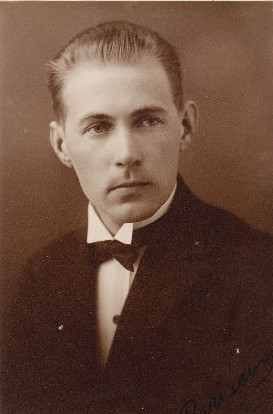
Pēteris Barisons
(18.04.1904 - 13.07.1947 )
A composer whose works were talented additions to the late Romantic style in Latvian music. The genres of orchestral music and vocal music with orchestra were his forte, but his a cappella choral works (about 30 songs in all) also belong with the best of Latvian music. He has also composed chamber music, both vocal and instrumental. Barisons received his musical education at the E.Vīgners College of Phonology in Riga. He graduated from the College in 1928, and afterwards worked as a lecturer there until 1939, though not continuously.
After graduating from the LC in composition (1932) and conducting (1934), he worked for a few years as a director of symphony concerts and opera productions. He became lecturer at the LC in 1936, head of the Department of Composition and head of conducting at the LSC in 1944, a professor from 1945.
The genres of orchestral music (two symphonies and ten other works) and vocal-orchestral music (three cantatas) were his forte. He also composed various instrumental works. In vocal music Barisons is known first for his original compositions for choir, and many of these have achieved classic status in Latvian music. The characteristic feature of his choral music – a heightened lyrical sensibility, which at times becomes almost ecstatically picturesque – is also evident in his solo songs. In his relatively few, but striking choral arrangements of folk songs, he does not follow the stylistic norms of folk music, but (as in his original compositions) combines colourful chromatic harmony with skilful polyphonic scoring and broad delineation of structure. The broad spectrum of Barisons' choral writing characteristically displays lyrical intensity of emotion and is at times almost ecstatically picturesque. Striking melodic line and skillful polyphonic scoring combine with a rich harmonic language, pellucid texture, and a developed sense of form. The sincerity and nobility of feeling manifested by Barisons' works have made his songs classics of Latvian choral music composed in the 1930s, and they are among the most widely performed.
